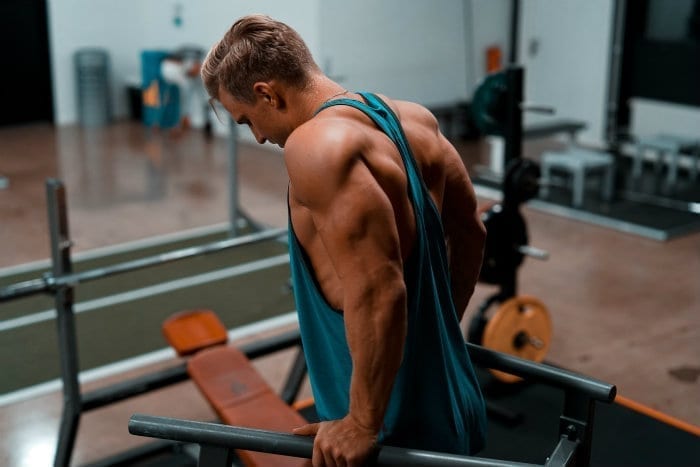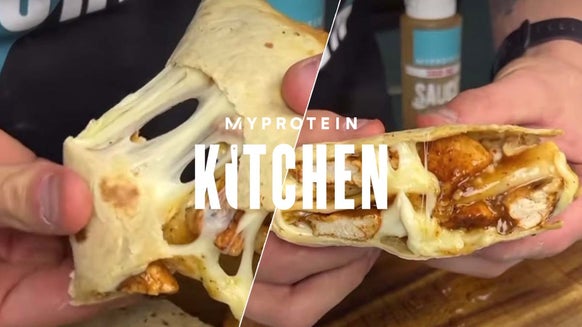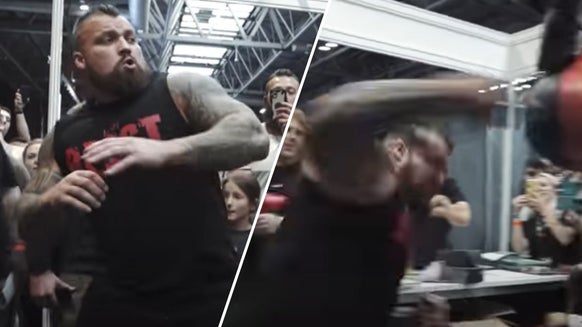How to do Tricep Dips

How to do tricep dips
Depending on how they’re performed, tricep dips can be great not only for developing the triceps, but also for developing the deltoids and pecs. Sometimes referred to as ‘squats for the upper body’, dips can provide a great stimulus for growth and can be easily loaded – although it’s important to note that your shoulders and upper body must be sufficiently warmed up prior to this exercise since it can be quite demanding on your shoulder mobility.
Muscles Targeted: Triceps, Pectoralis Major/Minor, Anterior/Lateral/Posterior Deltoids.
Equipment Needed: Dip Bars, Chair, Elevated Platform (i.e. steps), Parallettes.
- Adjust the bars to an appropriate height (you must be able to mount/dismount safely) with the space between them around shoulder-width apart.
- Place the heel of your hand on each of the bars, with your palms facing towards your body.
- Start at the top, with your elbows locked out (shoulders over elbows, over wrists).
- Lower yourself in a controlled manner until your upper arm is parallel (or slightly further than parallel if you’re mobile enough) to the ground.
- Without swinging or kicking your legs, press yourself back up to the starting position, locking your elbows out at the top again before initiating the following reps.
- Sit on the floor with the chosen platform behind you and place the heels of your hands onto the edge of the platform to support you.
- Slowly lower yourself until you reach the floor, or your upper arms are parallel to the ground (you can elevate your feet if you want to increase the difficulty).
- Push yourself back to the starting position, locking your elbows at the top before initiating the following reps.
Common Mistakes
Leaning too far forwards – This can result in preferential loading of the pecs, meaning that they will manage more of the load that your triceps, thus your triceps will not experience the desired If you intend to use dips as an accessory for chest exercises, then this is fine, but otherwise you should try to keep your torso more upright to facilitate more optimal loading of the triceps. Swinging or kicking your legs – This is likely a sign that you’re Try to regress the exercise a little bit by supporting your legs during the exercise – this will mean that your upper body does not need to work quite as hard. Lowering yourself too far or too quickly – Depending on your mobility, this could lead to some discomfort in the shoulder joint, so aim to start the concentric phase of the movement once you feel a moderate stretch in the working Lowering yourself too quickly may also result in excessive loading of the shoulder and minimising time under tension. Simply slow it down to rectify this. Incorrect hand placement – Having your hand placement too wide or too narrow can also result in some discomfort at your shoulder joint and put unnecessary strain on your Fix this by using a width that is very similar to the width that your hands would usually rest when your arms are relaxed.
What are the benefits of tricep dips?
Hypertrophy – Dips can provide an excellent stimulus for growth when combined with high volume workloads and additional loading if necessary. Manipulate factors like the number of sets and reps, the duration of each rep, and the amount of load used to ensure that you continue to provide sufficient stimulus to the muscles.
Strength – As one of the favourites for developing the triceps, dips can also have a great carryover to your bench press strength too, due to the triceps heavy involvement in the lift.
Mobility – Dips are a great way to improve your shoulder mobility, as they place the shoulder under load throughout a broad range of movement, particularly shoulder extension.




